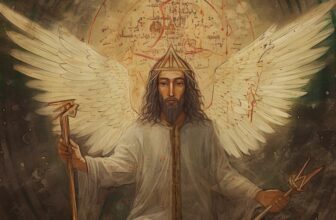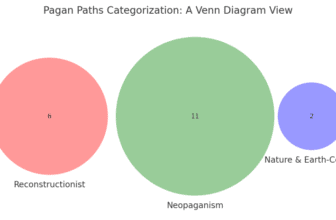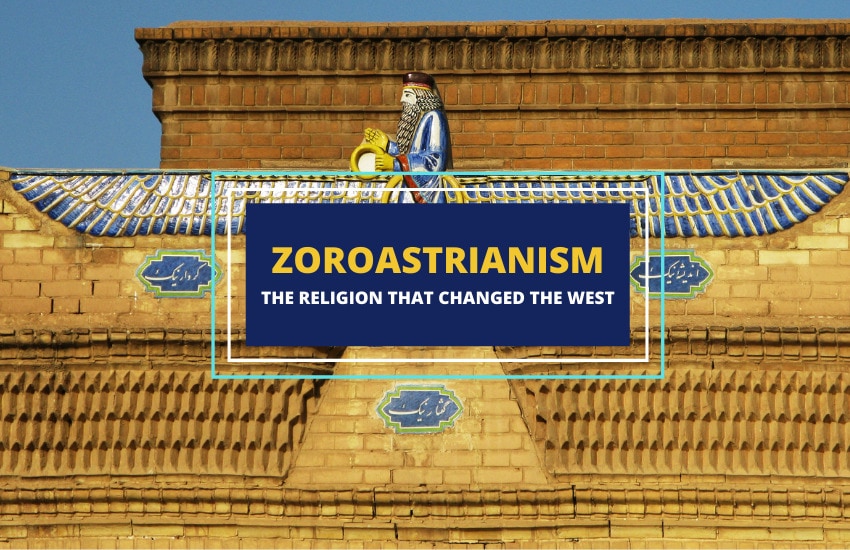
Table of Contents
We are often told that “The West is the product of Judeo-Christian values”. And while it’s true that these two out of the three Abrahamic religions have been a part of Western history for a significant period of time, we often ignore what came before them as well as what shaped them.
We are also often told that Judaism was the first monotheistic religion in the world. That’s technically correct but not quite. Suffice it to say that this doesn’t tell the whole story.
Enter Zoroastrianism, an Iranian religion that’s thousands of years old, which shaped the ancient world and has influenced the West more than you might suspect.
What is Zoroastrianism?
The Zoroastrian religion is based upon the teachings of the ancient Iranian prophet Zarathustra, also known as Zartosht in Persian, and Zoroaster in Greek. Scholars believe that he lived some 1,500 to 1,000 years BCE (before the Common Era) or 3,000 to 3,500 years ago.
When Zarathustra was born, the predominant religion in Persia was the ancient polytheistic Irano-Aryan religion. That religion was the Persian counterpart of the Indo-Aryan religion in India that later became Hinduism.
However, the prophet Zarathustra spoke against this polytheistic religion and spread the idea that there is only one god – Ahura Mazda, the Lord of Wisdom (Ahura meaning Lord and Mazda meaning Wisdom). It took several centuries after Zarathustra’s death for Zoroastrianism to become a fully shaped religion, which is why it’s often said that Zoroastrianism “began” in the 6th century BCE.
But What Exactly Did Zoroastrianism Teach?
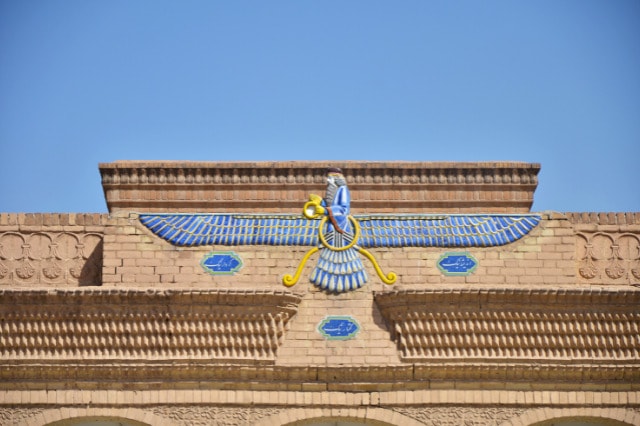
Zoroastrianism is all about the worship of one God, Ahura Mazda, who represents wisdom. The religion also introduced the concepts of dualism, depicting the eternal battle between the forces of good and evil. Good is represented by the spirit Spenta Mainyu and evil is symbolized by Angra Mainyu, both of which are under Ahura Mazda.
This dualistic worldview is the basis for the fundamental ethical principle of Zoroastrianism: the constant battle between good and evil. Those who practice the faith are encouraged to be active participants in this battle, choosing the path of righteousness, or asha, over the path of falsehood,or dorough.
This ability to choose is one of the unique aspects of Zoroastrianism. It emphasizes free will.
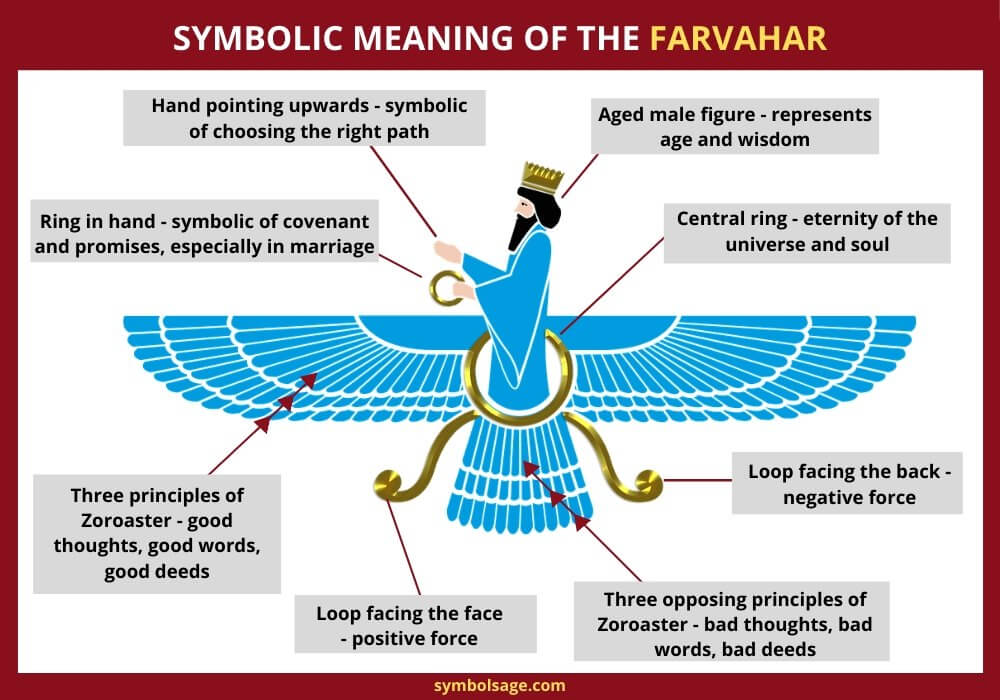
Followers are taught that they have the power and responsibility to choose between good and evil in their thoughts, words, and deeds, a trio of principles often summarized as “Good Thoughts, Good Words, Good Deeds.” You can choose your path, but there will be consequences for your choices.
This brings us to Zoroastrian eschatology, which was unique for its time. Eschatology is defined as the part of theology concerned with death, judgement, and the final destiny of the soul and of humankind. In Zoroastrianism, this includes beliefs in a future savior, a final judgment, and the eventual triumph of good over evil. After death, an individual’s soul is judged based on their life deeds, with the virtuous granted a place in heaven and the wicked condemned to hell.
While it’s true that there have always been variations of heaven and hell, even before Zoroastrianism, these were vague and not emphasized as places of reward and punishment based on ethical conduct.
Are Zoroastrians Fire Worshippers?
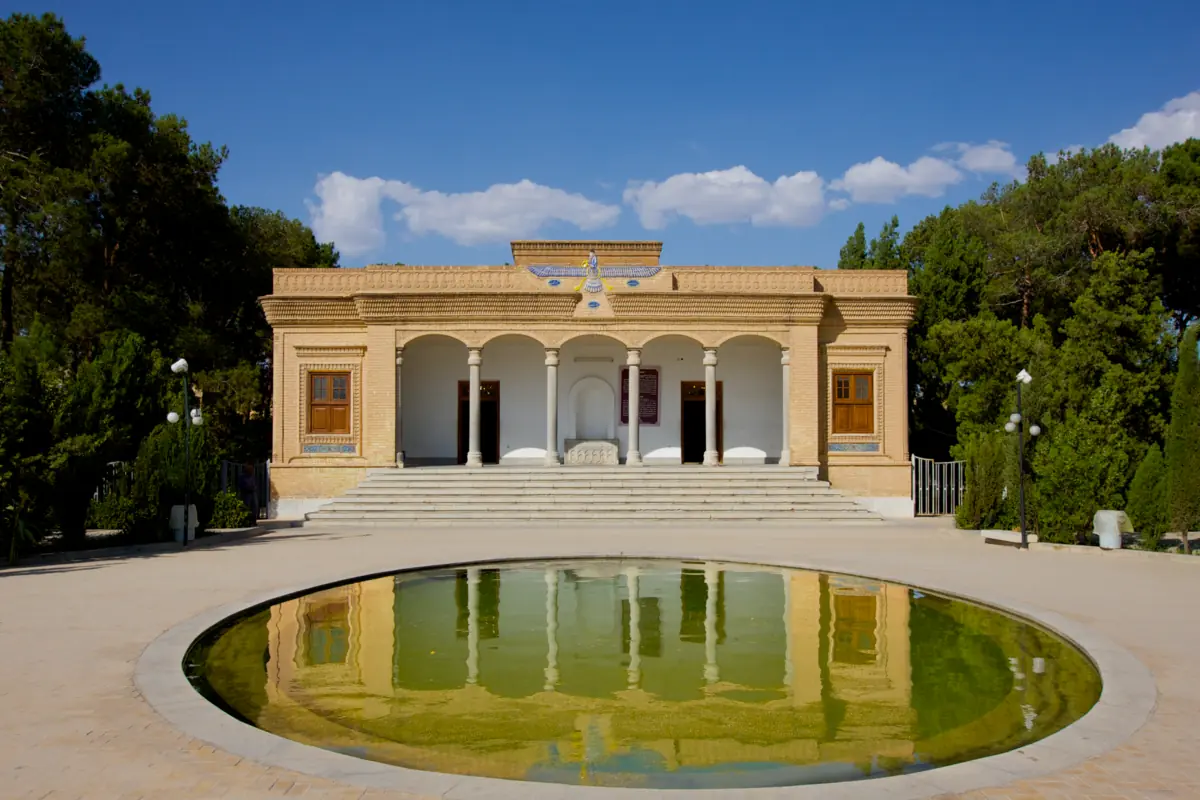
An important point to note is that Zoroastrians are often called fire worshippers, but this is a misunderstanding of their religious practices.
In Zoroastrianism, fire isn’t worshipped as a god but rather revered as a physical representation or symbol of the divine, specifically of the wisdom of Ahura Mazda.
Fire serves as a medium through which spiritual insight and wisdom are gained. In Zoroastrian fire temples, a sacred fire is kept continuously burning by the priests, representing the eternal presence of Ahura Mazda, righteousness, and truth. The fire is also a symbol of cosmic order and the light of wisdom that drives away the darkness of chaos and ignorance.
It’s sacred because of its purifying qualities, burning away evil and destruction. This reverence for purity extends to the environment, leading to a strong tradition of environmental stewardship.
As some have said, “Zoroastrianism is a very ecologically aware religion, which has led to some commentators calling it the first Green movement.”
It must be said that not all of these and the other ideas of Zoroastrianism came directly from Zarathustra. As with any other old and wide-spread religion, many of these concepts came from later authors and prophets who continued and evolved his teachings. Nevertheless, all of those are a part of Zoroastrianism and came before their near-identical counterparts in later monotheistic religions such as the Abrahamic religions.
The One Supreme God

At the center of Zoroastrianism is the idea that the whole world is the stage of a grand battle between two forces. On one side, there is the God Ahura Mazda and the forces of Light and Goodness, often identified as “the Holy Spirit” or Spenta Manyu – an aspect of God himself. On the other side, there is Angra Mainyu/Ahriman and the forces of Darkness and Evil.
As in the Abrahamic religions, Zoroastrianism believes that God will inevitably prevail and will defeat the Darkness on Judgement Day. What’s more, the Zoroastrian God has also given man the freedom of will to choose a side through his actions.
One key difference, however, is that in Zoroastrianism it’s said that even the sinners and those in hell will eventually enjoy the blessings of heaven. Hell is not an eternal punishment but a temporary punishment for their transgressions before they are allowed to join God’s Kingdom.
How Were the Abrahamic Religions Influenced by Zoroastrianism?
The concepts of monotheism, heaven and hell, a messiah, final judgment, and resurrection, all central to Judaism, Christianity, and Islam, have roots in Zoroastrian beliefs. But how did Judaism become influenced by Zoroastrianism?
Early Contact: Exile and Liberation
Most scholars agree that the first and main point of contact was between Zoroastrianism and the ancient Jewish people in Babylon. The latter had just been liberated by the Persian Emperor Cyrus the Great in the 6th century BCE and were starting to interact with many of the followers of Zarathustra. It’s believed that those interactions had started even before the conquest.
As a result, many of the concepts of Zoroastrianism started making their way through Jewish society and beliefs. That’s when the concept of Satan or Beelzebub appeared in Jewish thought, as it wasn’t a part of the older Hebrew writings.
Direct Influences
So how exactly did Zoroastrianism impact the Abrahamic religions? Let’s take a look at several significant ideas that may have come from the ancient persian religion.
1. Monotheism
While Judaism was already tending towards monotheism, the strict monotheistic belief system of Zoroastrianism, with Ahura Mazda as the supreme deity, may have helped crystallize Jewish monotheistic beliefs. This is further reflected in Christianity and Islam.
2. Angels and Demons
The Zoroastrian cosmology includes various spiritual beings, such as angels (yazatas) and demons (daevas). These concepts likely influenced the development of angelic and demonic beings in the Abrahamic faiths. According to the scholar Hannah Shapero, The Jewish and Christian idea of a personal “guardian angel” may also have been inspired by the Zoroastrian figure of the fravashi, the divine guardian-spirit of each individual human being.”
3. Dualism
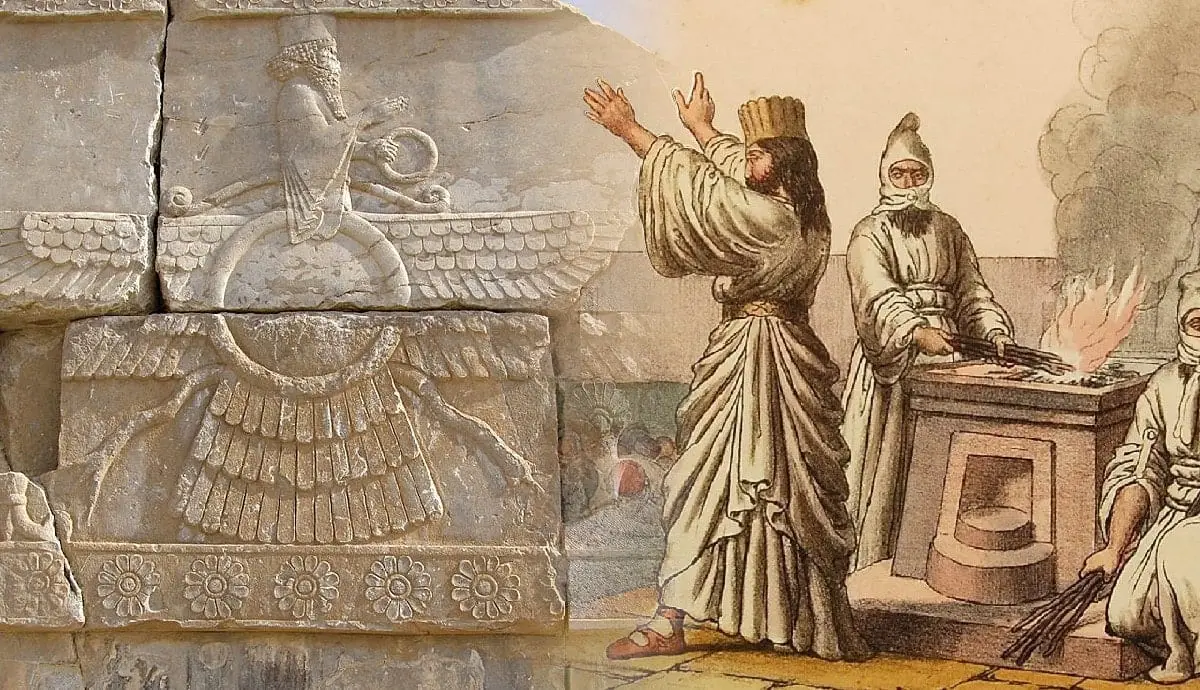
Zoroastrianism presents a dualistic universe, constantly torn between good and evil. This cosmic struggle influenced the concept of good and evil in Abrahamic religions, particularly the dichotomy between God and Satan.
4. Eschatology
Zoroastrian beliefs in a savior (Saoshyant), final judgment, and an end-time renovation of the world (Frashokereti) have parallels in the messianic, apocalyptic, and resurrection themes found in Judaism, Christianity, and Islam.
5. Heaven and Hell
Zoroastrianism has clearly defined notions of heaven and hell, based on moral and ethical actions in one’s life. Similar concepts of an afterlife, including divine judgement, are central in the Abrahamic faiths. Before the Exile and Persian contact, Jews believed that souls of the dead went to a boring Hades-like place called “Sheol.” However, there’s a marked change after the Exile, where the idea of a moralized afterlife, with heavenly rewards for the good and hellish punishment for the evil, begin to appear in Judaism. Another interesting note is that one of the words for “heaven” in the Bible is Paradise. It comes from the ancient Iranian words pairi-daeza, meaning “enclosed garden,”. It’s one of the very few definite Persian loan-words in the Bible.
6. The Devil
The Zoroastrian figure of Angra Mainyu (the destructive spirit) is often seen as a precursor to the figure of Satan in the Abrahamic religions.
The similarities between Zoroastrianism and the Abrahamic religions are just to glaring to ignore. Yet many believers of the Abrahamic religions may not readily acknowledge such influences. So, Zoroastrianism doesn’t often get the credit that it deserves.
Judaism vs. Zoroastrianism: Which Is Older?
You might be wondering: Isn’t Judaism older than Zoroastrianism and therefore – the oldest monotheistic religion?
Yes and no.
Judaism is technically considered the oldest monotheistic religion in the world as the earliest Hebrew scriptures date back to as far as 4,000 BCE or ~6,000 years ago. This is several millennia older than Zoroastrianism.
However, early Judaism wasn’t monotheistic. The earliest beliefs of the Israelites were categorically polytheistic. It took thousands of years for those beliefs to eventually become more henotheistic (henotheism being the worship of one god among a pantheon of other real gods), then monolatristic (monolatry being the worship of one god against a pantheon of other real but “evil” gods worshipped by other societies).
It wasn’t until the 6th-7th century that Judaism started becoming monotheistic and the Israelites began to believe in their one true God and viewing other gods as not ‘real’ gods.
Because of this evolution of Judaism, it can be considered the “oldest monotheistic religion”, because it is monotheistic today and it is older than Zoroastrianism. However, on the other hand, Zoroastrianism was monotheistic from the start, before Judaism became monotheistic, and therefore can be said to be the “first monotheistic religion”.
Impact of Zoroastrianism on Greek Thought
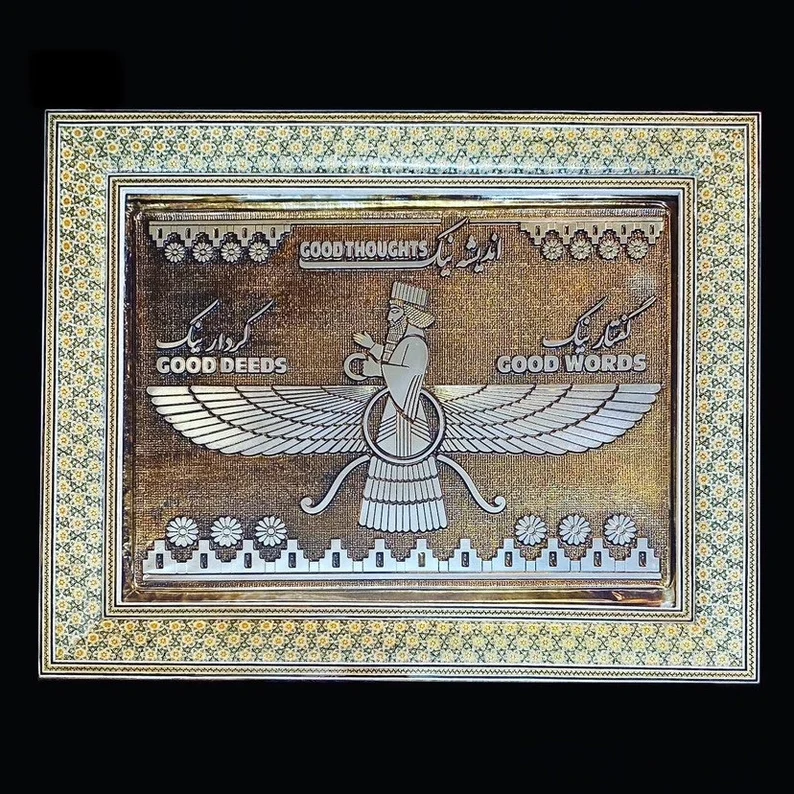
One lesser-known interaction between Zoroastrianism and European cultures occurred in Greece. As the conquest of the Persian Empire eventually reached the Balkans and Greece, the concept of Free Will made its way there too. For reference, the first comprehensive and militaristic contact between the two societies was in 507 BCE, but there were minor non-militaristic contacts and trade before that as well.
Regardless, the reason this matters is because, prior to their interactions with the Persian Empire and Zoroastrianism, the ancient Greeks didn’t really believe in Free Will. According to the ancient Greco-Roman religions, everyone’s fate had already been written and people had little actual agency. Instead, they just played the parts they were given by the Fates and that was that.
However, there is a noticeable shift toward the concept of Free Will in Greek philosophy after the two societies began increasingly interacting.
Granted, when talking about Christianity and the other Abrahamic religions, the question of “Free Will” is still vehemently debated, as these religions also believe that the future has already been written. As a result, opponents claim that the idea of “Free Will in Christianity” or in the other Abrahamic religions is an oxymoron (contradictory).
But, putting that debate aside, it’s widely accepted that Zoroastrianism was the religion that introduced the concept of Free Will into Judaism, Christianity, Greek philosophy, and the West as a whole.
How Zoroastrianism Influenced the Modern World

Zoroastrianism shaped the Abrahamic religions most people in the West worship today, and the Greco-Roman culture and philosophy which we hold as “the basis” of Western society. However, the influence of this religion can be seen in myriad other works of art, philosophies, and writings.
Even after the rise of Islam in the Middle East and Asia during the 7th century BCE and the eventual conquest over most Zoroastrian societies, this ancient religion has continued to leave its mark. Here are just a few famous examples:
1. In Literature
Dante Alighieri’s famous Divine Comedy, which describes a journey to Hell, is believed to have been influenced by the ancient Book of Arda Viraf. Written centuries earlier by a Zoroastrian author, it describes a cosmic traveler’s journey to Heaven and Hell. The similarities between the two works of art are striking. However, we can only speculate whether the similarities are a coincidence or if Dante had read or heard of the Book of Arda Viraf before writing his Divine Comedy.
Goethe’s West-East Divan is another famous example of Zoroastrian influence. It’s explicitly dedicated to the legendary Persian poet Hafez and features a chapter themed after Zoroastrianism.
George RR Martin’s famous fantasy series A Song of Ice and Fire, later adapted into the HBO TV show Game of Thrones, includes the popular legendary hero Azor Ahai. The author has said that he was inspired by Ahura Mazda, as Azor Ahai is also portrayed as a Demigod of Light destined to triumph over Darkness.
2. In Alchemy

Alchemy in Europe often seemed outright enamored with Zarathustra. There are many European Christian alchemists and authors who featured images of Zarathustra in their works. The ancient prophet was widely regarded as not just a philosopher but also an astrologer and “a master of magic”. This was especially common after the Renaissance.
3. In Philosophy
Voltaire was also inspired by Zoroastrianism as is evident by his novella The Book of Fate and its main character named Zadig. It’s the tale of a Zoroastrian Persian hero who faces a long series of trials and challenges before he weds a Babylonian princess.
While not at all historically accurate, both The Book of Fate and many of Voltaire’s other works are indisputably affected by his interest in ancient Iranian philosophy as was the case with many other leaders of the Enlightenment in Europe. Voltaire was even known under the nickname Sa’di in his inner circle. You may also know that Zadig & Voltaire is the name of a popular fashion brand today.
4. In Music & Movies

Freddie Mercury, the lead singer of the famous rock band Queen, was of Zoroastrian heritage. He was born in Zanzibar to Parsi-Indian parents and was originally named Farrokh Bulsara. He famously said in an interview I’ll always walk around like a Persian popinjay and no one’s gonna stop me, honey! His sister Kashmira Cooke later said in 2014 , “We as a family were very proud of being Zoroastrian. I think what [Freddie’s] Zoroastrian faith gave him was to work hard, to persevere, and to follow your dreams”.
Richard Strauss’ concerto for orchestra Thus Spoke Zarathustra is very clearly inspired by Zoroastrianism. What’s more, it was also inspired by Nietzsche’s tone poem of the same name – Thus Spoke Zarathustra. Strauss’ concerto then went on to become a big part of Stanley Kubrick’s 2001: A Space Odyssey. Ironically, many of Nietzsche’s ideas in the tone poem and purposefully anti-Zoroastrian but the fact that this ancient religion went on to inspire a long of European philosophers, composers, and modern Sci-Fi directors is indeed remarkable.
George Lucas’ Star Wars is also full of Light and Dark motifs who the franchise’s creator has said were inspired by Zoroastrianism. Star Wars, as a whole, is notorious for pulling inspiration from dozens of Eastern and Far Eastern philosophies and teachings.
5. In Industry
Another curious factoid is that the automobile brand Mazda’s name comes directly from the name of the Zoroastrian Lord of Wisdom, Ahura Mazda.
Zoroastrianism Today
The arrival of Islam in Persia in the 7th century marked the decline of Zoroastrianism as a major religion. Many Zoroastrians fled to India to escape religious persecution, becoming known as Parsis.
Today, the small community of Zoroastrians mainly reside in Iran and India, with significant diaspora in North America, the UK, and Australia. Zoroastrianism is only followed by about a 100 thousand people globally and the numbers continue to decline.
Yet the concepts it introduced, revolutionary during their inception, continue to form the bedrock of many belief systems and societies today.
FAQs About Zoroastrianism
Zoroastrianism began in ancient Iran and spread through the region via trade routes into Central and East Asia.
Followers of Zoroastrianism worship in temples, where the altars hold a flame that is kept burning eternally. These are also called fire temples.
The ancient Iranian religion, also known as Iranian paganism, was practiced before the advent of Zoroastrianism. Many of the deities, including the main god Ahura Mazda, would become integral to the new religion.
The main symbols are the farvahar and fire.
Because Zoroastrians believe in free will, they emphasize the importance of choosing the right path. As such, the saying good thoughts, good words, good deeds holds the most important concept of the religion.
When the Arabs conquered Iran, they effectively ended the Sasanian Empire. This led to the decline of the Zoroastrian religion, and many began to convert to Islam. Zoroastrians were persecuted under Muslim rule and many were forced to convert due to the abuse and discrimination they faced.
Wrapping Up
People in the West often view Iran and the Middle East as an entirely different culture and an almost “alien” part of the world. But the fact of the matter is that Middle Eastern philosophy and teachings not only predate most of their European counterparts but have also inspired them to a substantial degree.
As possibly the world’s first major monotheistic religion, Zoroastrianism impacted the great monotheistic religions that were to follow as well as Western philosophical thought. In this way, it’s influence can be felt in almost every facet of Western thought.
Related Articles:
Zoroastrian Symbols: Exploring Ancient Persia’s Faith
8 Powerful Persian Symbols and What They Mean
11 Major Persian Gods and Goddesses – A List
Traditional Persian Names for Boys and Their Meanings
5 Greatest Persian Poets and Why They Remain Relevant
Persian Lion and Sun Symbol – History and Meaning





